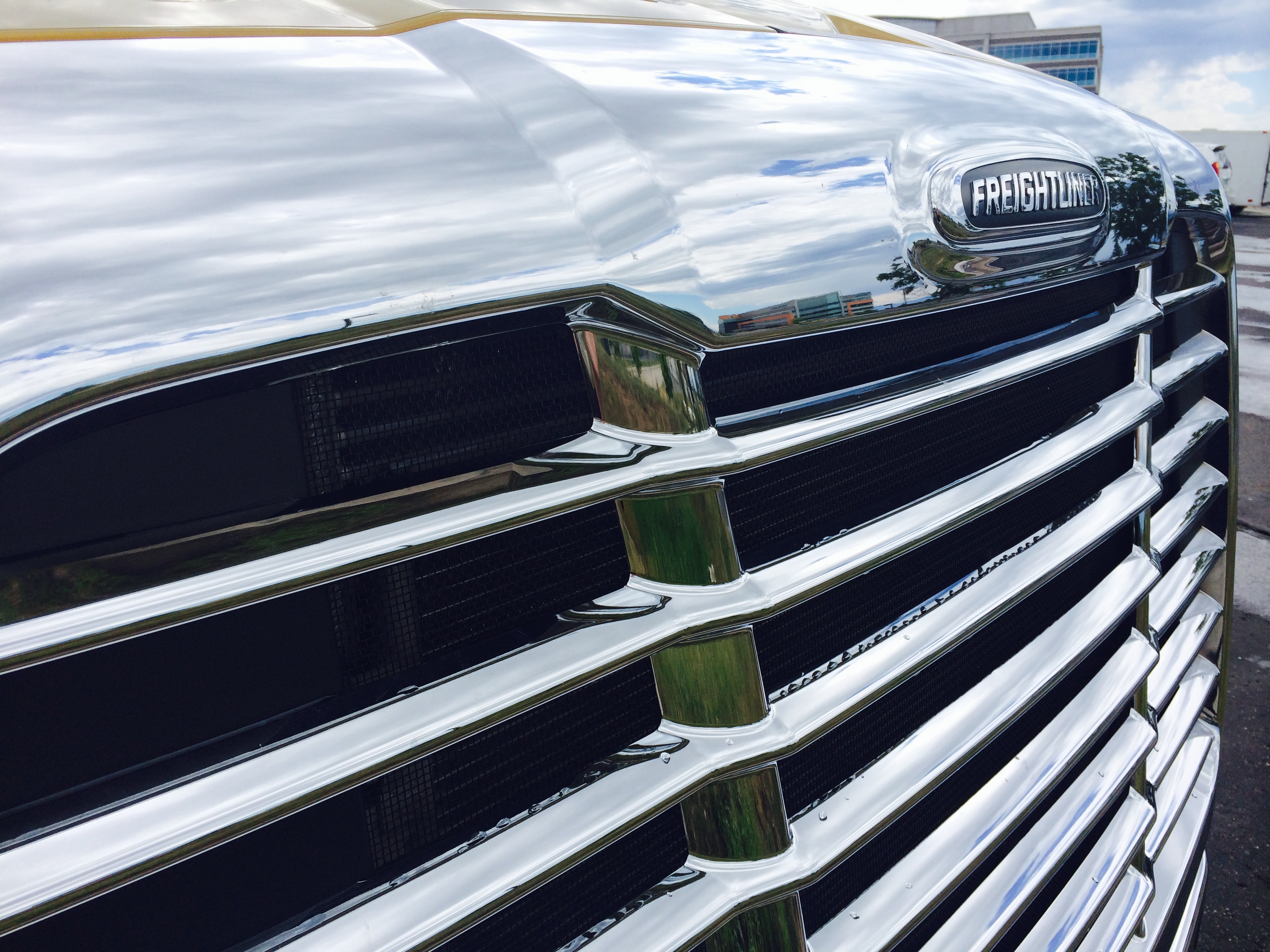If you’re looking to the pre-owned market for your next truck, you’re not alone. Close to 60% of all class 8 trucks purchased by owner-operators are actually pre-owned, according to the 2015 Truck Purchase and Lease Survey by Overdrive.com. Yet, no matter how comfortable you and others feel about buying pre-owned versus new, when shopping you still need to be vigilant about how equipment was maintained in its past life—and its health right now.
Generally speaking, comprehensive checks of key components including brakes, lights, tire-wear, plus fluids and lubrication, should occur at 5,000 and 10,000-mile intervals on heavy-duty vehicles. The best practice when buying pre-owned heavy-duty trucks? Stick with dealers who can produce a valid history of preventive maintenance (PM) on each vehicle.
With that as your starting place, here are key points to consider when choosing your pre-owned vehicles—to minimize costs and hassles once you drive it off the lot.

Transmission: While fully automatic transmissions are becoming more prevalent in the class 6-8 market for a variety of reasons, manual and automated manual transmissions remain dominant in the pre-owned market. Manual is a time-tested workhorse, but given the ongoing shortage of experienced big rig drivers, the automated manual transmission (AMT) has gained favor, and is widely available as pre-owned class 6-8 inventory. AMT combines the advantages of a clutch-actuated manual gearbox with a computer-controller shift actuator and clutch. This can extend transmission life and increase fuel efficiency. Pricing is also more favorable on AMTs than is generally found with the newer generation of fully automatic transmissions. AMTs are also less expensive to replace, if that should be an issue.
Braking Systems: In recent inspections conducted by the Commercial Vehicle Safety Alliance during Brake Safety Week, more than 10% of out-of-service citations were issued for brakes out of adjustment. That’s a wake-up call given today’s reduced stopping distance regulations.
It all serves as a reminder that brake systems do serious friction work in heavy trucking, and need to be maintained. In the pre-owned market, Class 4-6 vehicles tend to use reliable and cost-effective hydraulic and pneumatic disc brakes, while Class 8 trucks use drum brakes and pneumatic disc brakes as well.
Heavy-duty brakes like these have a long track record for stopping power, safety, extended pad and rotor life, and corrosion resistance.
Well-maintained brake systems offer reliable performance with no or low noise, increased resistance to wear and most importantly, more stopping power.
Also Read: Understanding How Emissions Impact Today's Pre-owned Market
Lighting System: The National Institute for Automotive Service Excellence (ASE) recommends that, on a regular basis, you inspect, test, repair, or replace stop and parking brake light circuit switches, wiring, and connectors. Exterior lighting circuits on heavy-duty trucks experience considerable wear and tear, and should be carefully evaluated for operating conditions when moving and when parked. NHTSA guidelines for headlamps, tail lamps, running lights, all markers and reflectors – for trucks and trailers – are tightly regulated and factor prominently into roadside inspections. A thorough check of interior and exterior lighting systems should be part of any pre-owned truck purchase.
Are there other factors to consider when shopping for a pre-owned truck? Absolutely, and those factors will be probably be unique to your situation. However, make no mistake: The Big 3 above are critical for all buyers.
This article was originally featured on Ryder.com.